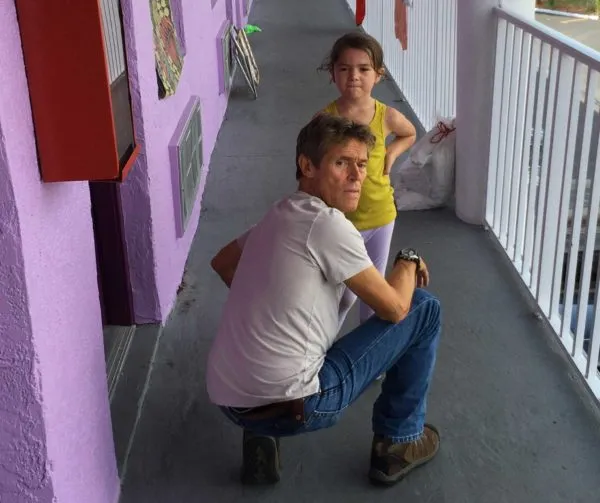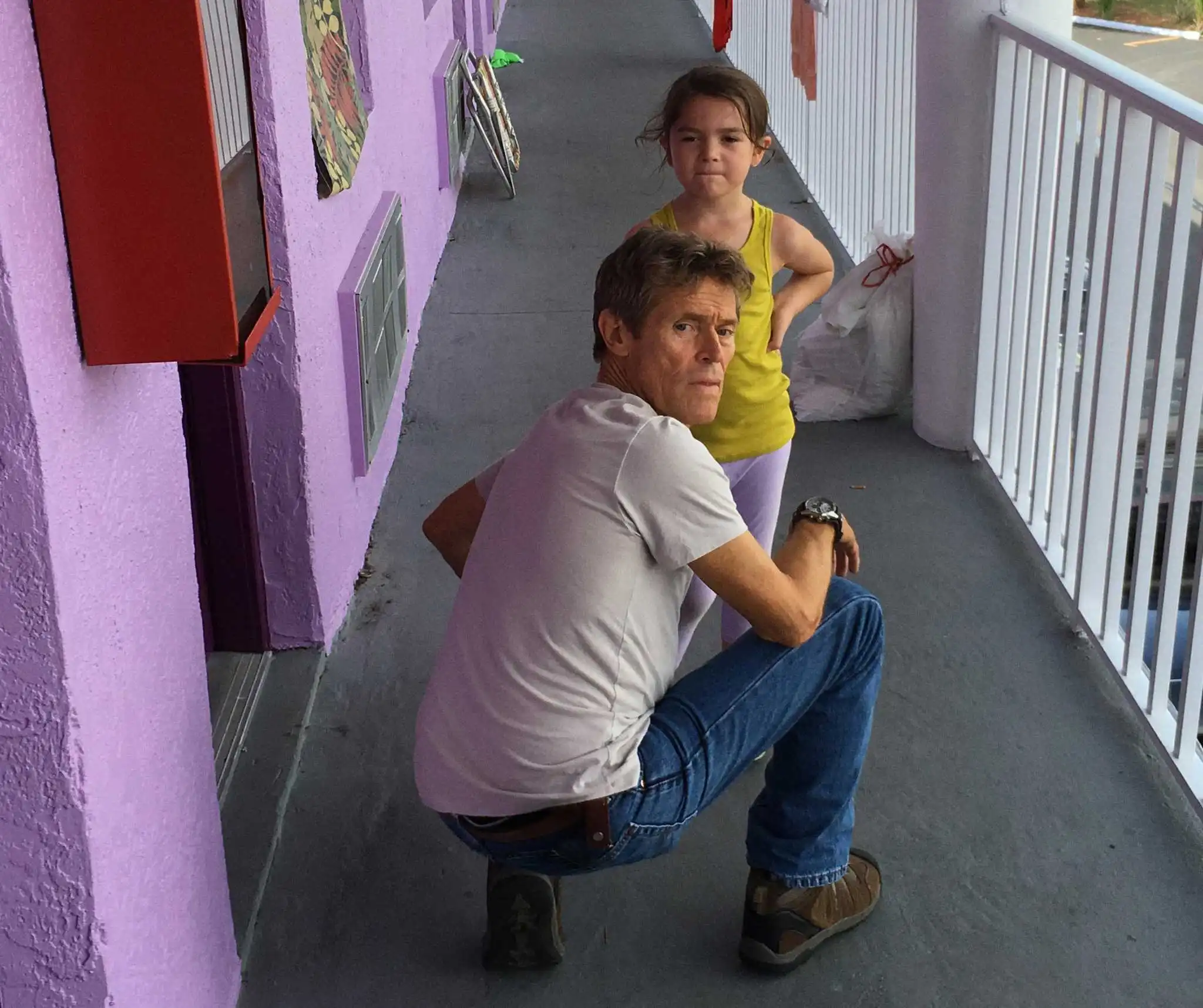
When the first plans were being drawn up for Orlando’s Walt Disney World Resort in the 1960s, the amusement complex was initially called “The Florida Project.” Set on the seedy outskirts of this American Mecca, the world of Sean Baker’s “The Florida Project” (2017) playfully engages with the mythology of its corporate neighbor in ways that one might not readily expect. In addition to sharing a name, Baker’s sixth feature can be seen as its own kind of Disney movie, one perhaps of the princess variety: Moonee (Brooklynn Prince) is our 6-year-old heroine, and her kingdom is the “Magic Castle,” a dilapidated but colorful extended-stay motel in Kissimmee, Florida. The residents of the Magic Castle are exiles of sorts, displaced from the opportunities of the greater world by the economic downturn of the Great Recession. Lacking adult supervision, Moonee goes on wild adventures with a ragtag group of friends, panhandling for ice cream, exploring abandoned houses and spitting on stranger’s cars. But whereas the absence of an adult presence in other movies about children is an entertaining exercise in suspending your disbelief (think “The Little Rascals,” an inspiration for “The Florida Project”), we know that Moonee’s free rein is rooted in the all-too-real toil of her young mother Halley (Bria Vinaite), who is busy struggling to provide for her daughter on a day-to-day basis.
Most Disney movies are centered around the family unit, following the protagonists as they are separated from their families and later reunified, and “The Florida Project” observes a similar, more metaphorical iteration of that narrative – Moonee is physically close to her mother, but there’s a lack of understanding between the two characters, a rift between Moonee’s childhood idealism and Halley’s well-intentioned but destructive behavior. In the middle of the film, scenes of Moonee playing with her friends become juxtaposed with shots of Moonee sitting in the bathtub. Later, when a man stumbles into the bathroom as Moonee is splashing around in the water, we realize that Halley has been prostituting for money, keeping Moonee in the bathroom when she has nowhere else to go. The viewer never sees the man; our vision is restrained to the pastel pink of the bathroom tiles, the array of plastic dolls and ponies on the rim of the tub. Moonee’s dreamy world is juxtaposed with an allusion to Halley’s harsher one, and we fear that someday those worlds will collide, to ruinous effects. As the movie goes on, it becomes increasingly uncertain whether their two realities could ever be reconciled.
Despite the cruel forces that are both hinted at and illustrated in “The Florida Project” – homelessness, malnourishment, pedophilia, neglect – what prevents Baker’s work from devolving into poverty porn, and what ultimately distinguishes “The Florida Project” as a piece of art, is the film’s commitment to seeing the wonder that Moonee sees, to recognize the childlike magic that exists even in the most heartbreaking of situations. As socially conscious moviegoers, we sometimes experience a strange titillation in witnessing suffering onscreen, and the same story from Halley’s more jaded perspective might have played to those desires, ultimately reducing these characters to their difficult circumstances. But Baker is intentional about avoiding such dehumanization. In interviews, he has spoken about his decision to position the camera from Moonee’s point of view, to deepen the pastel colors in editing and to amplify the bangs and shouts and laughter that Moonee hears around her. In this way, a venture into the weedy, swampy backlot of the Magic Castle becomes a safari, and a free continental breakfast at a nearby motel is the height of luxury. We are reminded that, although poverty creates unjust barriers against opportunity, those in poverty do not lose their capacity to experience the full breadth of human feeling.
Call this presumptuous, but perhaps “The Florida Project” is an entry into a new era of American poetic social realism, one that would include Sean Baker’s previous film, “Tangerine” (2015), a fast-paced, pop verité exploration of the lives of two black trans sex workers in West Hollywood, and Jim Jarmusch’s “Paterson” (2016), a whimsical, poetic narrative about a working-class couple in New Jersey. Another movie that comes to mind is last year’s critically acclaimed “Moonlight” (2016), which shares similar subject matter with “The Florida Project” – both films are set in Florida and spend at least part of their running time in the perspective of a child. But more significantly, what both “Moonlight” and “The Florida Project” accomplish – in addition to “Tangerine” and “Paterson” – is an aesthetic vision of reality that’s willing to challenge traditional ideas about the way working class and impoverished communities should be portrayed in realist cinema (gritty, colorless, minimalist), while still managing to observe their characters with documentary-like clarity. In “Moonlight,” that means the otherworldly swelling of cello music, the melodramatic slow motion and the glisten and glitter of sweat, all in portrayal of Miami public housing, a community presumably lacking of such ethereality. And In “The Florida Project,” it’s Moonee’s candy-colored vision of an otherwise unforgiving and cruel environment. In these movies are a post-Recession desire for socioeconomic realism, tempered with a post-modern, Trump-era confusion about what can be considered “real.” And from these forces emerge a scene like this one in “The Florida Project,” in which Moonee cranes her neck to watch Halley attempt to hitchhike, Halley’s thumb raised against the technicolor purples and pinks of the sky. It’s been a long day for Moonee and Halley, and the softness of the clouds doesn’t quite mirror the viewer’s growing anxiety that the pair won’t make it home before dark. But that doesn’t mean it’s not too late for us to linger in the enchanting, vivid colors of the Floridian sunset, its beauty reminding us that perhaps there’s hope yet for Moonee and Halley to have their happy ending.
Contact AnQi Yu at anqiyu ‘at’ stanford.edu.
